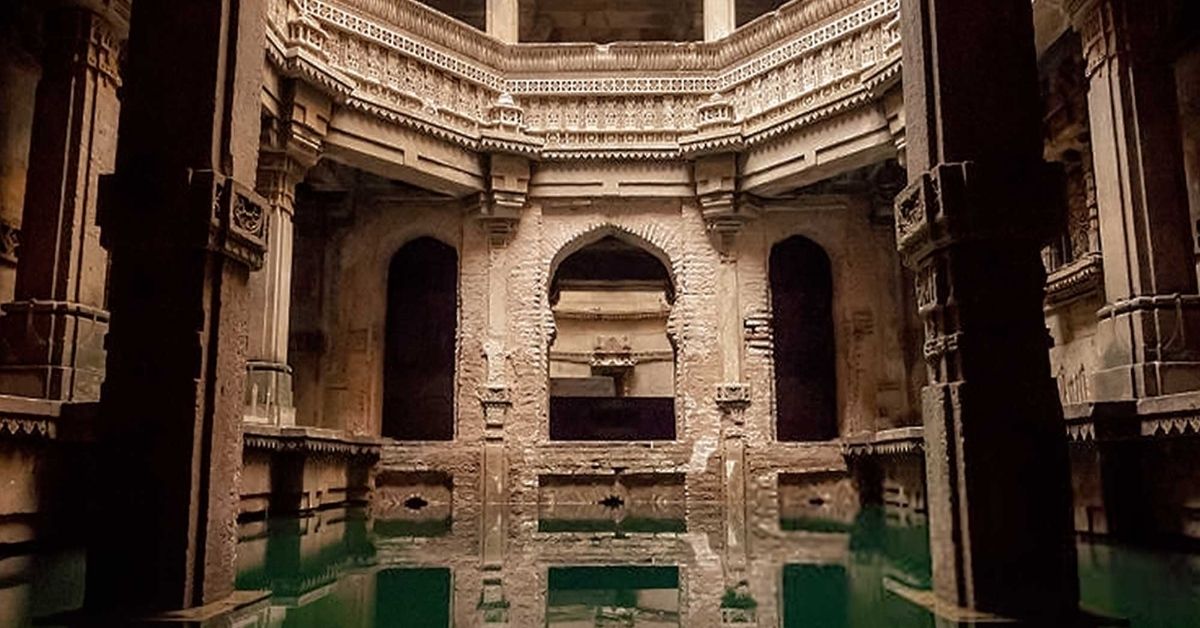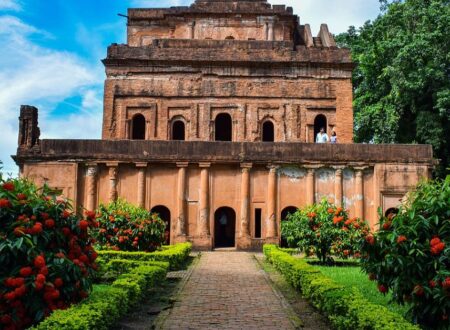Adalaj Vav is one of the popular historical heritage sites in Ahmedabad, Gujarat. The word Vav is a Gujarati term for stepwell. The Adalaj step-well also called Adalaj ni Vav or Rudabai Vav, located in small village Adalaj near Gandhinagar and Ahmedabad. The architecture marvel has also been featured in the song Zaalima starring Shahrukh Khan and Mahira Khan.
History of Adalaj Vav
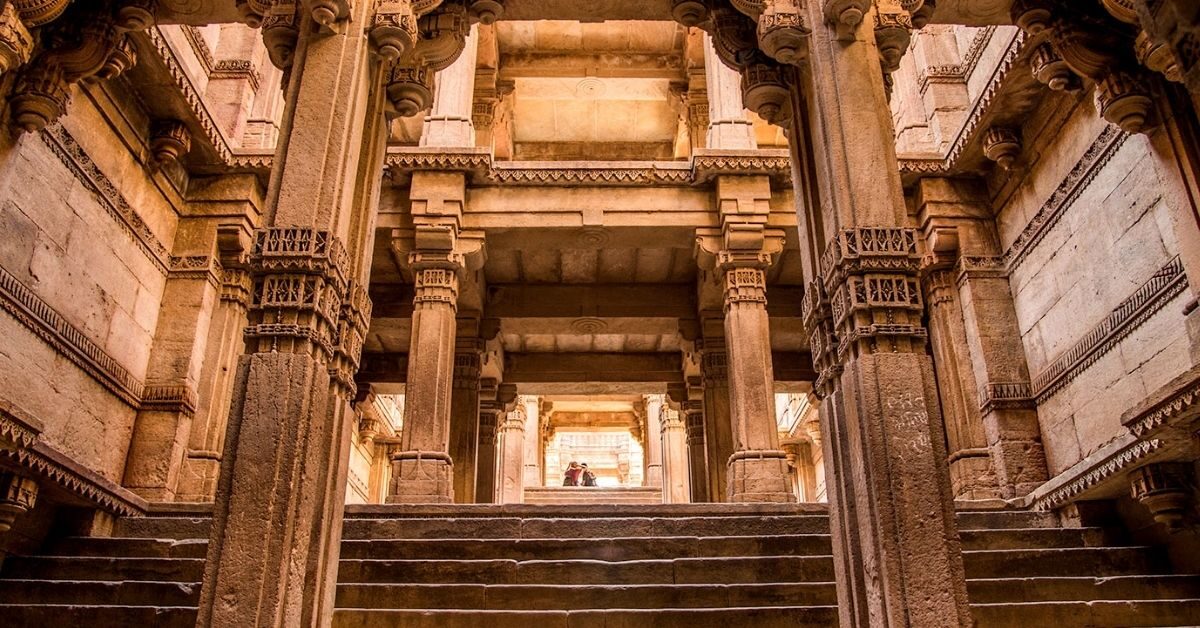
King Rana Veer Singh started the construction of the stepwell in Adalaj but unfortunately, before its completion, King Mehmud Begada attacked Veer Sing and killed him in the war and acquired territory. Rana Veer Singh’s widow, queen Roopba, was a beautiful woman. She wanted to perform Sati due to her husband’s demise. Begada stopped her from giving up her life and asked her hand for marriage.
She agreed to this proposal on the condition that he had to first complete the building of the stepwell. King Begda was infatuated by the queen’s beauty, and therefore agreed to build the well and it was completed in the year 1498. Thus stepwell architecture is influenced by Indo Islam design. Queen Rudabai achieved her objective of completing the stepwell initiated by her husband. Then, decided to end her life and jumped in to well. King Begada did not destroy the structure or the Hindu infrastructure as per their normal practise of destroying temples.
Architecture of Adalaj Ni Vav
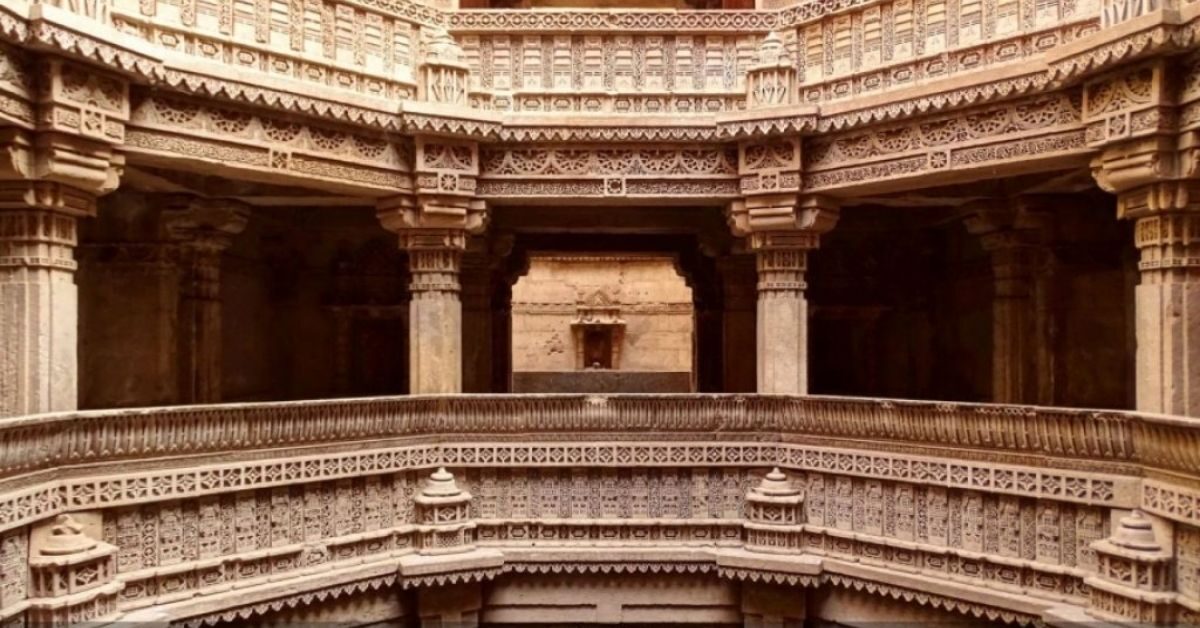
The Adalaj stepwell is five stories deep, The underground platform is square in shape and is huge. The ceiling contains huge openings which make for good ventilation for the octagonal well. Adalaj exhibits Islamic architecture as well as Hindu architecture. The carvings on the wall have both Islamic motifs of flowers and deities of Hindu as it is a blend of the heritage of both the religion. There are many beautiful carvings on the walls like a woman performing daily chores. Such as churning of buttermilk, adorning themselves, visuals of the performance of dancers and musicians.
The stepwell has three entrances, with a platform resting on 16 pillars. All three of the stairway entrances meet underground where the platform has an octagonal top. The corners of all 16 platforms have shrines carved into them.
The structure of the Adalaj stepwell is similar to the Dada Harir stepwell. Adalaj Ni Vav, the sandstone made stepwell, has similarities to Solanki architecture. One can see the mouth of the stepwell from the top, it’s not round but octagonal in shape. The air and light vents in the roofs at various floors have large openings.
From the first story level, three staircases lead to the bottom water level of the well, which is unique. The construction is along a north-south direction, with the entrance is from the south. It has three staircases are from the south, west and east directions leading to the landing level. The landing level is however on the northern side of the well. Four small rooms with oriel windows decorated with minutely carved brackets are provided. At the landing level, at the four corners.
Why is it called Sounds of Silence?
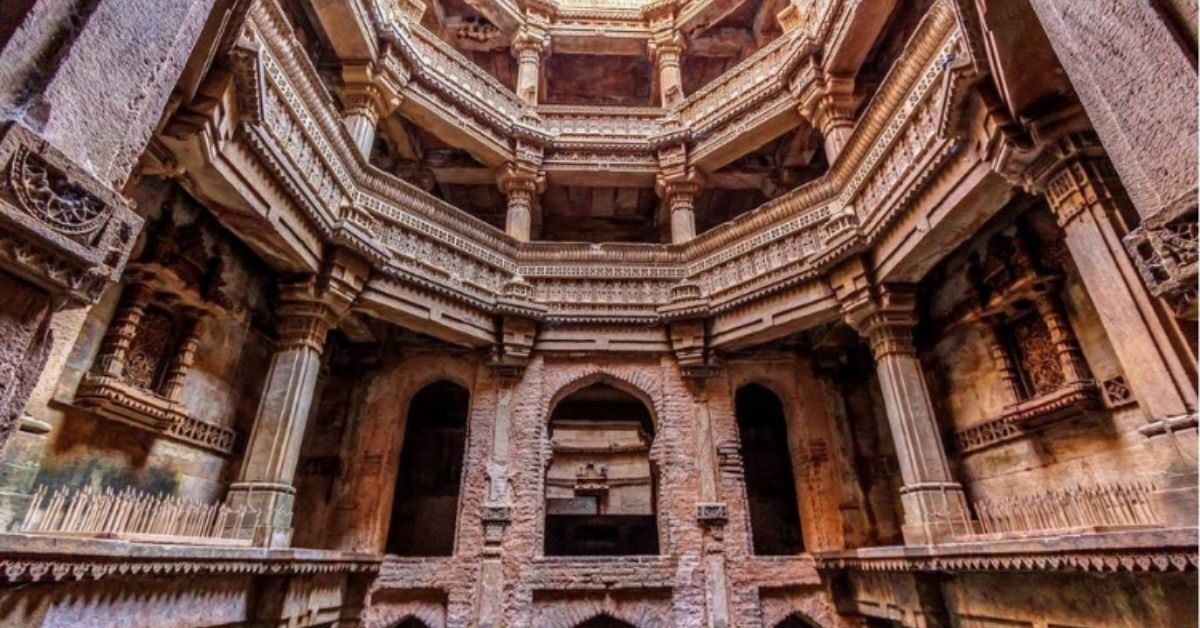
Adalaj Vav‘s silences say a lot about the history of the place. One can witness the culture, history of these beautiful carvings and architecture. As the place has silence which is soothing for a traveller. Avid history lover in order to look at the marvels from our rich past.
When to visit
The best time to visit Adalaj Stepwell is from October to March. The Steep well is open from 6 am to 6 pm.
The environment inside the well is very soothing. The temperature is five degrees lower than the outside hot temperatures. Due to which it was the perfect resting place in ancient times. The magnificent light play of the sunrays and the carved architecture makes it the best place for photography. Adalaj Stepwell is one place that will make all the architects and history lovers absolutely spellbound.
Follow India Chalk on Instagram for more amazing travel content. You can share your travel story with us. Reach out to us on email at contact[at]ndiachalk[dot]com. This blog is curated by India Chalk and written by Soumya Karkera.

